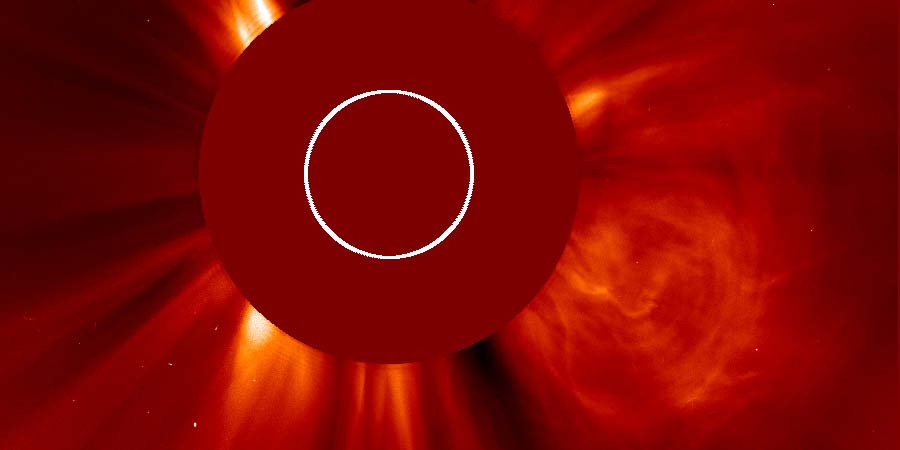Earth-directed CME, M6 solar flare
Friday, 15 December 2023 19:21 UTC

Yesterday's X2.8 solar flare (which is the strongest solar flare since 2017) came from sunspot region 3514 which is rotating towards the west limb. It became clear quite soon following the event that it would be eruptive but is there a chance that the resulting coronal mass ejection (CME) arrives at Earth? Keep on reading for the answer!
As expected, the CME is directed primarily towards the west but we do see a clear partial halo signature of over 270 degrees which stands to reason that there is a good chance that this cloud will arrive as a glancing blow at Earth likely late on Saturday, December 16. We do not expect major geomagnetic storm conditions from this event but minor G1 geomagnetic storm conditions with a slight chance of moderate G2 geomagnetic storm conditions are possible.
Here is a look at the coronal mass ejection launched during yesterday's X2.8 solar flare, which is the strongest solar flare since 2017! As expected, the CME is directed primarily towards the west but we do see a clear partial halo signature of over 270 degrees which stands to… pic.twitter.com/qfTgIa03Ii
— SpaceWeatherLive (@_SpaceWeather_) December 15, 2023
Double peak M6.2 and M6.9 solar flare
Sunspot region 3514 continued today with an impressive M-class event. This event had a double peak at M6.2 and M6.9 respectively with the M6.9 value being registered around 07:34 UTC. This solar flare was also highly eruptive like the X2.8 flare from yesterday but coronagraph imagery indicates that the coronal mass ejection from this event likely does not have an earth-directed component.
Sunspot region 3514 continued today with an impressive M-class event. This event had a double peak at M6.2 and M6.9 respectively with the M6.9 value being registered around 07:34 UTC. This solar flare was also highly eruptive like the X2.8 flare from yesterday but coronagraph… pic.twitter.com/OnYbv31OQp
— SpaceWeatherLive (@_SpaceWeather_) December 15, 2023
Thank you for reading this article! Did you have any trouble with the technical terms used in this article? Our help section is the place to be where you can find in-depth articles, a FAQ and a list with common abbreviations. Still puzzled? Just post on our forum where we will help you the best we can!
Latest news
Latest forum messages
Support SpaceWeatherLive.com!
A lot of people come to SpaceWeatherLive to follow the Sun's activity or if there is aurora to be seen, but with more traffic comes higher server costs. Consider a donation if you enjoy SpaceWeatherLive so we can keep the website online!

Space weather facts
| Last X-flare | 2025/03/28 | X1.1 |
| Last M-flare | 2025/03/31 | M1.2 |
| Last geomagnetic storm | 2025/03/27 | Kp5 (G1) |
| Spotless days | |
|---|---|
| Last spotless day | 2022/06/08 |
| Monthly mean Sunspot Number | |
|---|---|
| February 2025 | 154.6 +17.6 |
| March 2025 | 127 -27.6 |
| Last 30 days | 127 -25.7 |


